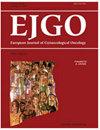A Retrospective Study of 657 Women With Vaginal Intraepithelial Neoplasia (VaIN)
IF 0.5
4区 医学
Q4 OBSTETRICS & GYNECOLOGY
引用次数: 0
Abstract
Objective: The aim of this study was to explore the clinical characteristics of patients with VaIN and identify more sensitive diagnostic methods.Methods: This study retrospectively analyzed 657 patients with VaIN from the International Peace Maternal and Child Health Hospital in Shanghai during a ten-year period. Results: Among the 657 patients, 26.5% were diagnosed with VaIN 2/3. The proportions of patients with VaIN 2/3 among those who did and did not undergo hysterectomy were 39.5% and 24.7%, respectively. The sensitivity of cytology for VaIN in those with only VaIN, VaIN concomitant with cervical or vulvar lesions, and posthysterectomy VaIN was 56.7%, 66.5%, and 72.3%, respectively. The sensitivity of hrHPV for VaIN in the same categories was 87.7%, 86.5%, and 74.3%, respectively. The sensitivity of cytology and hrHPV cotesting for VaIN in the same categories was 95.2%, 95.6%, and 95.0%, respectively. In patients who did not undergo hysterectomy, HPV16 was detected in 9.5% of VaIN 1 lesions among the HPV DNA-positive patients, while the other 12 types of HPV were detected in 62.6% of VaIN 1 lesions. In patients who underwent hysterectomy, HPV16 was detected in 2.1% of VaIN 1 lesions, and the other 12 types of HPV were detected in 54.2% of VaIN 1 lesions.Conclusions: A combination of cytology and colposcopy could increase the sensitivity of the diagnosis of VaIN. The other 12 high-risk types of HPV positive may be more closely related to VAIN 1, more attention should be paid.657例女性阴道上皮内肿瘤的回顾性研究
目的:本研究旨在探讨VaIN患者的临床特征,并确定更敏感的诊断方法。方法:回顾性分析上海国际和平妇幼保健院10年来657例VaIN患者的临床资料。结果:在657例患者中,26.5%的患者被诊断为VaIN2/3。VaIN2/3患者在进行和未进行子宫切除术的患者中的比例分别为39.5%和24.7%。只有VaIN、伴有宫颈或外阴病变的VaIN以及膀胱切除术后VaIN的细胞学敏感性分别为56.7%、66.5%和72.3%。hrHPV对VaIN的敏感性分别为87.7%、86.5%和74.3%。细胞学和hrHPV联合检测对VaIN的敏感性分别为95.2%、95.6%和95.0%。在未进行子宫切除术的患者中,在HPV DNA阳性患者中,9.5%的VaIN 1病变中检测到HPV16,而其他12种类型的HPV在62.6%的VaIN-1病变中检测出。在接受子宫切除术的患者中,2.1%的VaIN 1病变中检测到HPV16,其他12种类型的HPV在54.2%的VaIN-1病变中检测出。结论:细胞学检查与阴道镜检查相结合可提高VaIN诊断的敏感性。其他12种HPV阳性高危型可能与VAIN 1关系更密切,应引起更多关注。
本文章由计算机程序翻译,如有差异,请以英文原文为准。
求助全文
约1分钟内获得全文
求助全文
来源期刊
自引率
25.00%
发文量
58
审稿时长
1 months
期刊介绍:
EJGO is dedicated to publishing editorial articles in the Distinguished Expert Series and original research papers, case reports, letters to the Editor, book reviews, and newsletters. The Journal was founded in 1980 the second gynaecologic oncology hyperspecialization Journal in the world. Its aim is the diffusion of scientific, clinical and practical progress, and knowledge in female neoplastic diseases in an interdisciplinary approach among gynaecologists, oncologists, radiotherapists, surgeons, chemotherapists, pathologists, epidemiologists, and so on.

 求助内容:
求助内容: 应助结果提醒方式:
应助结果提醒方式:


